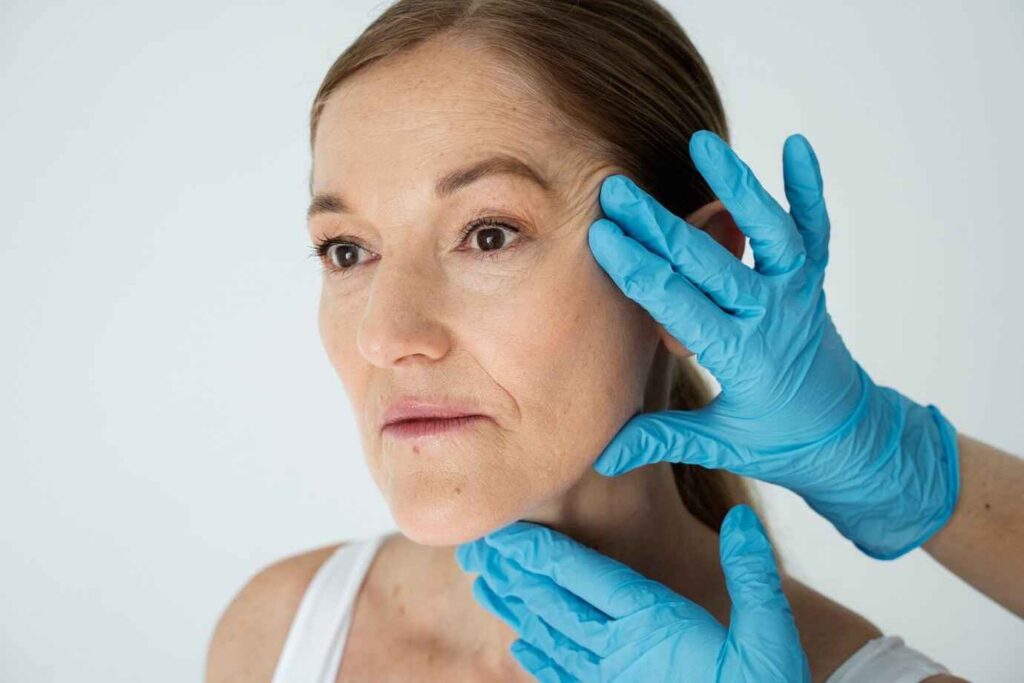Tips for Choosing Between Ultherapy and Deep Plane Facelift

When it comes to facial rejuvenation, there are many options available to address sagging skin, wrinkles, and the loss of youthful contours. Two of the most popular treatments for achieving a more youthful appearance are Ultherapy and the deep plane facelift in Melbourne. Both procedures have their unique benefits and can deliver impressive results, but choosing the right one depends on various factors, including your desired outcome, skin condition, and recovery preferences. In this post, we’ll explore the key differences between Ultherapy and the deep plane facelift to help you make an informed decision about which treatment is right for you.
What Is Ultherapy?
Understanding Ultherapy
Ultherapy is a non-invasive treatment that uses ultrasound technology to lift and tighten the skin. The procedure works by delivering focused ultrasound energy to the deeper layers of the skin, stimulating collagen production and encouraging the skin to tighten over time. Unlike traditional facelifts, Ultherapy does not require any incisions, making it a minimally invasive option with little downtime.
The results of Ultherapy are gradual, with improvements typically becoming noticeable over the course of a few months as collagen continues to build. The treatment is ideal for individuals looking for subtle, non-surgical skin tightening and a refreshed appearance.
Benefits of Ultherapy
- Non-Invasive: Ultherapy requires no surgery or downtime, making it a great option for those who want a lift without the need for incisions.
- Minimal Recovery: Because Ultherapy is non-surgical, recovery is quick, with most individuals able to return to their normal activities immediately after the treatment.
- Targeted Treatment: Ultherapy uses focused ultrasound energy to target specific areas of the skin, such as the brow, jawline, and neck, providing customised results.
Ideal Candidates for Ultherapy
Ultherapy is best suited for individuals with mild to moderate skin laxity who are looking for a non-surgical treatment to lift and tighten their skin. It is particularly effective for those who want to address early signs of ageing, such as slight sagging or fine lines. Ultherapy is a great option for those who are not yet ready for a more invasive procedure but want to achieve noticeable improvements.
What Is a Deep Plane Facelift?
Understanding the Deep Plane Facelift
A deep plane facelift is a more invasive surgical procedure designed to lift and tighten the skin and underlying tissues of the face. Unlike traditional facelifts, which primarily focus on tightening the skin, the deep plane facelift targets the deeper layers of the face, including the muscles and connective tissues. By repositioning these deeper structures, the deep plane facelift provides a more comprehensive and long-lasting lift.
This technique is particularly effective for addressing significant facial sagging, jowls, and the loss of volume in the mid-face. The procedure involves incisions around the hairline and along the natural creases of the face, allowing the surgeon to access the deeper tissues and reposition them for a more youthful appearance.
Benefits of a Deep Plane Facelift
- Long-Lasting Results: A deep plane facelift provides dramatic and long-lasting results. The changes are permanent, and the effects can last for many years, depending on your age and lifestyle.
- Comprehensive Lift: This technique offers a more thorough lift compared to less invasive facelifts, addressing both the skin and the underlying tissues for a more natural and rejuvenated appearance.
- Improved Contours: A deep plane facelift can restore youthful contours to the face, including lifting the cheeks, smoothing jowls, and tightening the neck area.
Ideal Candidates for a Deep Plane Facelift
The deep plane facelift is best suited for individuals with moderate to severe signs of ageing, such as significant sagging, deep wrinkles, and volume loss. If you have noticed the appearance of jowls, deep nasolabial folds, or loose skin along the jawline and neck, a deep plane facelift can offer the most significant and long-lasting improvement. This procedure is ideal for those seeking more dramatic results and who are ready for the commitment of a surgical procedure.
Key Differences Between Ultherapy and Deep Plane Facelift
Invasiveness
- Ultherapy: Non-invasive, no incisions or surgery required.
- Deep Plane Facelift: Surgical procedure requiring incisions and longer recovery time.
Recovery Time
- Ultherapy: Minimal downtime, with most individuals returning to normal activities immediately.
- Deep Plane Facelift: Longer recovery, with swelling, bruising, and soreness lasting for several weeks.
Results
- Ultherapy: Results develop gradually over time as collagen production increases. Effects are subtle and non-permanent.
- Deep Plane Facelift: Provides immediate and long-lasting results with a more dramatic, youthful lift.
Treatment Area
- Ultherapy: Primarily targets areas like the brow, jawline, and neck.
- Deep Plane Facelift: Addresses the entire face, including the cheeks, jawline, neck, and lower face.
Duration of Results
- Ultherapy: Results last for about 1 to 2 years before requiring maintenance treatments.
- Deep Plane Facelift: Results can last 10 years or more, depending on the individual’s age and lifestyle.
Suitability
- Ultherapy: Best for individuals with mild to moderate skin laxity who want a non-surgical option.
- Deep Plane Facelift: Ideal for individuals with moderate to severe signs of ageing who seek more dramatic, long-lasting results.
Tips for Choosing Between Ultherapy and a Deep Plane Facelift
Consider the Severity of Your Ageing Concerns
If you have only mild to moderate signs of ageing, such as slight skin sagging or fine lines, Ultherapy may be the right choice for you. However, if you are experiencing more significant sagging or deep wrinkles, a deep plane facelift may be a better option for achieving dramatic and long-lasting results.
Think About Your Recovery Preferences
If you prefer a treatment with minimal downtime and can tolerate gradual improvements over time, Ultherapy is an excellent choice. On the other hand, if you are willing to undergo a surgical procedure with a longer recovery time in exchange for more immediate and permanent results, a deep plane facelift may be more suitable.
Consider Long-Term Results
Ultherapy offers results that last 1 to 2 years, with maintenance treatments required to sustain its effects. If you’re looking for a more permanent solution with long-lasting results, the deep plane facelift offers more lasting improvements that can last for many years.
Consult with a Specialist
To make an informed decision, it is essential to consult with a qualified cosmetic surgeon or aesthetic specialist. They will assess your facial features, skin condition, and goals to recommend the best treatment plan tailored to your needs.
Conclusion
Both Ultherapy in Melbourne and the deep plane facelift are effective treatments for facial rejuvenation, but the best option for you depends on your unique needs and preferences. Ultherapy is an excellent choice for those seeking a non-invasive, gradual improvement in skin laxity, while the deep plane facelift provides a more comprehensive and long-lasting solution for individuals with more advanced signs of ageing. By carefully considering your goals, recovery preferences, and the severity of your ageing concerns, you can make an informed decision that will help you achieve a refreshed and youthful appearance.






